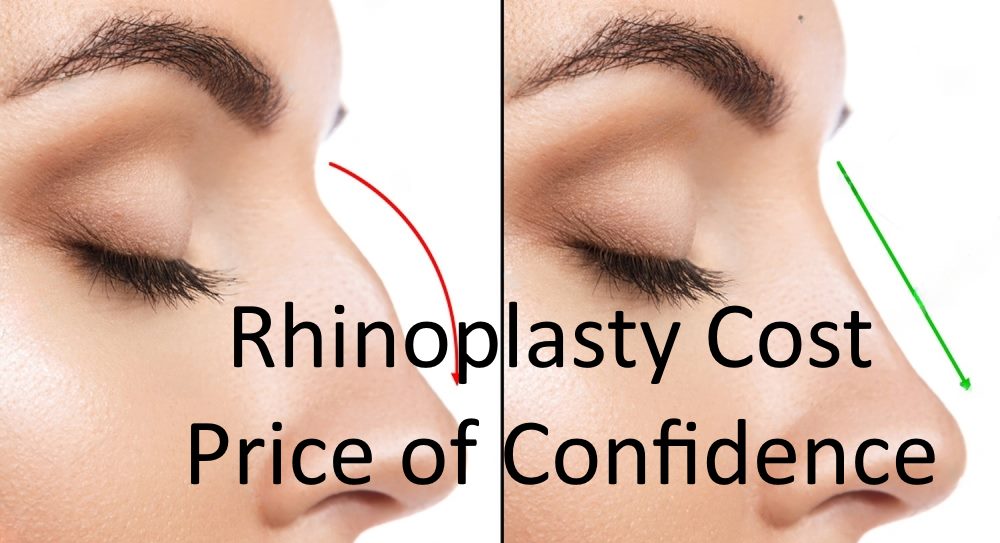Rhinoplasty Procedure: Embarking on the journey of a rhinoplasty, commonly known as a nose reshaping or nose operation, can raise a multitude of questions. If you’re considering this transformative procedure, understanding the steps involved is crucial. Let’s dive into the details and demystify the process.
How is Rhinoplasty Surgery Done?
When it comes to the actual procedure, rhinoplasty is a delicate art that involves several key steps:
- Consultation and Planning: The journey begins with a thorough consultation with your surgeon. Discuss your goals, expectations, and any concerns you may have about the procedure. Your surgeon will examine your nose, considering both aesthetics and functionality and work with you to develop a personalized plan.
- Anesthesia: On the day of the surgery, you’ll be administered either local or general anesthesia, depending on the complexity of the procedure and your preferences.
- Incisions: Rhinoplasty can be performed using either an open or closed approach. In an open rhinoplasty, a small incision is made across the columella (the strip of skin separating the nostrils). Closed rhinoplasty involves incisions made within the nostrils, leaving no visible external scars.
- Reshaping the Nose: With access to the underlying structures, the surgeon reshapes the nose by manipulating the bone and cartilage. This step addresses concerns such as a dorsal hump, bulbous tip, or deviated septum, depending on your unique needs.
- Closing Incisions: Once the desired changes are made, the incisions are meticulously closed with sutures. If external incisions were made, the tiny scars typically fade over time and become inconspicuous.
- Recovery: Post-surgery, you’ll be monitored as you wake up from anesthesia. It’s common to experience some swelling and bruising, and you’ll need to follow your surgeon’s postoperative care instructions diligently.
How Long is the Rhinoplasty Procedure?
One common question is about the duration of the rhinoplasty procedure. While this can vary based on the complexity of the surgery and the specific changes being made, the average rhinoplasty typically takes between two to three hours. Factors such as whether it’s a primary or revision rhinoplasty and the techniques used play a role in determining the duration.
Is Rhinoplasty a Painful Surgery?
Let’s address the elephant in the room: the pain factor. While pain tolerance varies among individuals, many patients report mild discomfort rather than outright pain. Surgeons prescribe pain medications to manage any postoperative discomfort, and following the recommended rest and recovery guidelines significantly contributes to a smoother experience.
How Long Can Rhinoplasty Last?
The results of rhinoplasty are long-lasting and often considered permanent. However, the outcome may take time to fully reveal itself as residual swelling subsides. It’s essential to be patient and follow your surgeon’s advice for the best and most enduring results.
What are the Side Effects of Rhinoplasty?
As with any surgical procedure, rhinoplasty has potential side effects. These can include:
- Swelling and Bruising: Temporary swelling and bruising around the eyes and nose are common but diminish over time.
- Nasal Obstruction: Some patients may experience temporary nasal congestion, usually due to postoperative swelling. This typically resolves as the healing process progresses.
- Scarring: With closed rhinoplasty, there is minimal visible scarring. Open rhinoplasty may leave a small scar on the columella, but it usually fades and becomes inconspicuous.
By understanding these potential side effects, you’re better prepared to navigate the recovery process and appreciate the transformative results of rhinoplasty.
Can Rhinoplasty Go Wrong? Debunking Myths and Addressing Concerns
Now, let’s tackle a question that often lingers in the minds of those considering rhinoplasty: Can it go wrong? Like any surgical procedure, rhinoplasty does come with risks, but the likelihood of undesirable outcomes can be significantly minimized with careful planning and the right surgeon. Key considerations include:
- Choosing the Right Surgeon: A skilled and experienced surgeon specializing in rhinoplasty is crucial. Research potential surgeons, review their portfolios, and don’t hesitate to ask about their experience with the specific changes you’re seeking.
- Realistic Expectations: Communication is key. Discuss your expectations openly with your surgeon during the consultation. Understanding what is realistically achievable helps ensure satisfaction with the results.
- Follow-Up Care: Postoperative care is vital. Attend all follow-up appointments, follow your surgeon’s instructions diligently, and communicate any concerns promptly. A proactive approach to recovery minimizes the risk of complications.
What is the Failure Rate of Rhinoplasty Procedure?
Addressing the idea of failure in rhinoplasty can be nuanced. While the overall success rate is high when performed by a skilled surgeon, defining failure can be subjective.

Unmet expectations, complications, or the need for revision surgery may be considered as such. It’s important to note that revisions are not uncommon in rhinoplasty, and a skilled surgeon can address concerns to achieve the desired outcome over time.
Will People Notice My Rhinoplasty?
The goal of rhinoplasty is to enhance your natural features subtly, not draw attention to the fact that you’ve had surgery. In the initial postoperative phase, swelling and bruising may be noticeable, but as the healing progresses, these effects diminish. Most people will appreciate the improved harmony of your facial features without necessarily pinpointing the surgery.
Crafting Your Personal Rhinoplasty Journey: Tips for Success
As you embark on your rhinoplasty journey, consider these tips to ensure a successful and satisfying experience:
- Thorough Research: Invest time in researching surgeons, reviewing before-and-after photos, and understanding the nuances of the procedure. The more informed you are, the better equipped you’ll be to make decisions aligned with your goals.
- Open Communication: Establishing clear communication with your surgeon is crucial. Express your desires, ask questions, and seek clarification on any aspects of the procedure.
- Patience is Key: Rhinoplasty results take time to fully manifest. Be patient with the healing process, follow postoperative guidelines, and trust that the outcome will be worth the wait.
Final Thoughts: Navigating the Rhinoplasty Landscape with Confidence
Rhinoplasty is not just a surgical procedure; it’s a personal journey toward enhancing your facial harmony and boosting your confidence. By understanding the steps involved, debunking myths, and embracing the transformative potential of rhinoplasty, you empower yourself to make informed decisions. Remember, your unique features make you who you are, and a successful rhinoplasty should enhance, not erase, your individuality. As you navigate the path to your desired nose shape, do so with confidence, curiosity, and a commitment to embracing the best version of yourself
.




